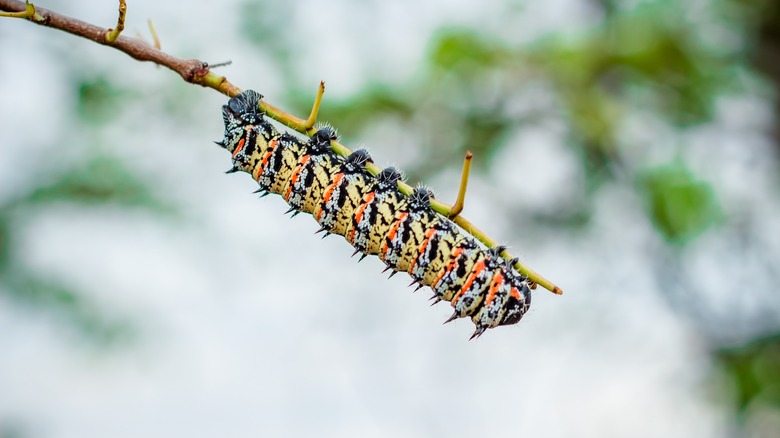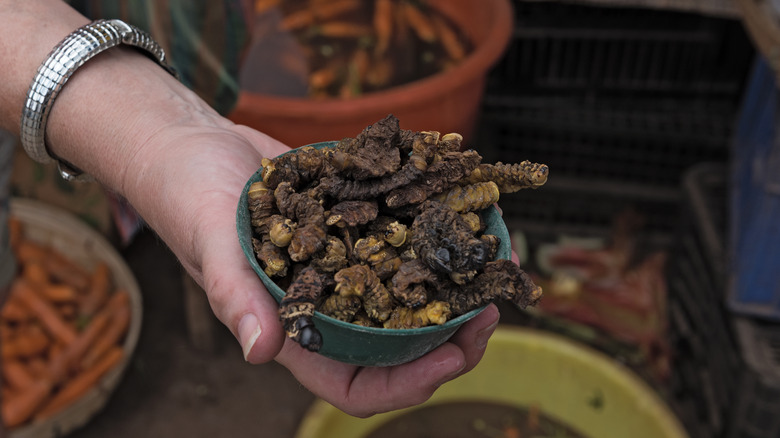The African Caterpillar That Is Said To Taste Like Steak
Entomophagy, the practice of eating bugs, is liable to draw cocked eyebrows and crinkled noses from many Americans. But around the world, some two billion people enjoy insects as dietary staples, according to The New York Times. These people may be on to something, as a very strong case can be made for entomophagy. Though the exact nutritional makeup varies from species to species, insects are generally high in protein, vitamins, minerals, essential amino acids, and omega-3 fats, and farming them exerts far less strain on the environment.
Insects have been largely rejected from Western diets, which the Times attributes to a matter of geography. Europe has a low level of biodiversity due to its cold climate; It is home to just 2% of the world's edible insects, none of which are large enough to provide much in the way of food. The American attitude is showing signs of a potential shift, as crickets have achieved some popularity. However, beetles and caterpillars are much more popular internationally, accounting for nearly 50% of insects eaten globally, according to further reporting by the New York Times.
This might come as a surprise if you're used to seeing caterpillars smaller than your pinky, but on the streets of Harare, Zimbabwe, it's another story altogether (per Atlas Obscura).
Mopane worms are the size of cigars
Mopane trees comprise swaths of woodlands throughout the southern African nations of Zimbabwe, Botswana, Namibia, and South Africa, per Nature. Approximately twice a year, following the rainy seasons of December to January and April to May, the trees become laden with mopane worms. These formidable caterpillars would be destined to transform into emperor moths, but unfortunately, they taste too good (via Atlas Obscura). Locals pluck the caterpillars, which can reach the length of a hand and the girth of a cigar, off of the branches, occasionally coaxing the stubborn ones off with a stick, per Arab News. Once the harvest is done, it's time to prepare the worms for market.
The first step is to squeeze the worm hard enough to expel its entrails, which have a bright hue from the mopane leaves that compose the caterpillar's diet. Then they are laid out to dry in the hot sun. If any remnants of the leaf-filled innards are left in the caterpillar, it will have a somewhat tea-like flavor, according to Atlas Obscura. The preferred methods of preparation are drying, pickling, smoking, and frying. When smoked, they take on a meaty flavor that some liken to well-done steak or biltong, a beef jerky-like snack. When fried, Arab News likens their salty crunch to potato chips, and notes that the dried worms may be added to a variety of sauces, and served as a main course or side.
With one worm comes many flavors.

